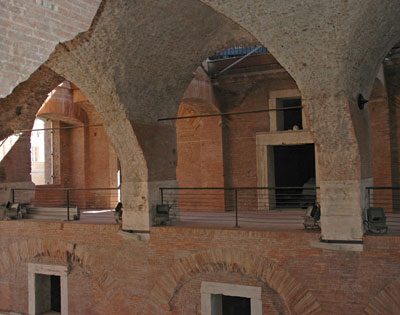Study reveals resilience of Roman architectural concrete
An international research team has revealed important clues to the longevity of such Roman architectural marvels as the Pantheon, Trajan’s Markets and the Colosseum.

Led by researchers at UC Berkeley, Lawrence Berkeley National Laboratory and Cornell University, the team discovered that the long-term resilience of the concrete is due to the mineralogical changes that occur as the Roman volcanic ash-lime mortar cures. The Romans developed a standard formula for making this mortar about 2,000 years ago. The mortar binds cobble-sized fragments of tuff and brick, and it was used in the concrete walls of many monuments in Rome.
The researchers studied a reproduction of the Roman architectural volcanic ash-lime mortar as it cured over 180 days. They compared this material to Roman mortar samples dating back 1,900 years. They observed the formation of a durable calcium-alumino-silicate mineral that acts to bind and reinforce interfacial zones in the mortar, preventing obstacles to the growth of microcracks.
The findings were reported today (Monday, Dec. 15) in an online early edition of the Proceedings of the National Academy of Sciences. Marie Jackson, a faculty scientist in Berkeley’s Department of Civil and Environmental Engineering, is lead author of the paper.
Details of the new study are described in a Berkeley Lab press release.
This follows work by Jackson and colleagues published last year on Roman seawater concrete, described in this2013 press release.
This research was supported by the National Science Foundation and the Loeb Library at Harvard University. The researchers used Berkeley Lab’s Advanced Light Source, a Department of Energy Office of Science user facility.
